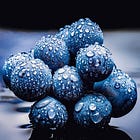Support Napa Valley Features – Become a Paid Subscriber Today
If you’re reading this, you care about independent, locally owned, ad-free storytelling — reporting that puts our region’s stories first, not corporate interests or clickbait.
Join a community that values in-depth, independent reporting. Become a paid subscriber today — and if you already are, thank you. Help us grow by liking, commenting and sharing our work.
Is Brand Loyalty Dead?
By Dan Berger
NAPA VALLEY, Calif. — Some wine-lovers once had a love affair with certain iconic brands that they were determined to acquire, come hell or high water. It may all have started with Beaulieu Vineyard’s Georges de Latour Private Reserve Cabernet, first produced in 1938. The “cult” category soon (in the 1970s) included Heitz’s Martha’s Vineyard Cab, Phelps’ Insignia, Opus One, and Cabs from Dominus, Stag’s Leap (Cask 23), Caymus (Special Selection), Silver Oak, Dunn, Spottswoode, Ridge (Monte Bello), Chateau Montelena, Grace Family and Mondavi (Reserve).
Eventually a new wave became the in-crowd. This included Harlan, Colgin, Bryant, Scarecrow and, of course, the iconic Screaming Eagle. And later dozens more. Most of the attention for these products was based on scores, which were based on weight. The more the greater love.
By contrast, the old wave represented the kind of enthusiasm that was based mainly on word-of-mouth and stylistic preferences. I remember a number of Diamond Creek lovers buying all three of the separate vineyards that Al Brounstein and his wife, Boots, produced. (They also made a rare fourth wine called Lake on occasion.)
In the early 1980s, I knew a Diamond Creek Cabernet lover. He bought other brands; he loved cabernet. But he was so taken with Diamond Creek and the winery’s story that he visited there often and had an impressive DC collection.
Challenge your vocabulary with this week’s mystery word. Submit your answer in the poll, and check the bottom of the page for the correct answer.
Brand loyalty has its beneficial aspects. Regulars buy the same wines every year. They usually tout their purchases to other wine-lovers. They carry the message of the brand that they revere, and they spread goodwill, not only about the brand, but also the sub-region from which it comes. They also remember everything about the good vintages and even praise the “off”-year wines.
Wineries love people like my Diamond Creek-loving friend not only because of their regular purchases but also because of the connection that the winery has with loyal buyers who understand their house style.
But is brand loyalty fading? From what I hear, many longtime wine collectors no longer are wedded to the same wineries they once adored. There are several reasons for this, all of which I have deduced without hard proof. However, I do believe that the evidence below indicates that, when taken together, brand loyalty for California cabs may have begun declining as long ago as 2015.
Here are a few of the reasons why this is occurring.
Style Changes
Years ago, there were standard ways of making cabernet sauvignon that implied that the wines would be popular in the broad market as long as they conformed to the conventional qualities that were selling well. Straying too far from the standard style was risky. Standardization was tried and tested and proved to be so widely accepted throughout the United States that to deviate from the conventional was risking major loyalist defections.
About 35 years ago, several new tactics began to be employed that began to change the way certain grapes were being handled both in the vineyard and the winery. Cabernets were not as complex, but they were bigger, softer and more attractive to novice buyers. Older, more classically trained winemakers didn’t necessarily like this new style, but wine newcomers did.
And so did the winery owners because prices went up and up and consumers seemed so starstruck with scores in the high 90s that they paid enormous sums for wines that had very little track record. It was a heady time for many cabernet producers.
Whether these style changes made better wine is debatable. For the record, I really didn’t love the new style. I will never be convinced, for example, that the bigger-is-better style of zinfandel makes any sense. I still think the grape is best with about 14% alcohol, not 16%. Even 15% confuses me.
And apparently my distaste for these opulent oafs was not really misplaced. Zinfandel sales in the last decade have slumped, and no one is really quite sure what the best style of zin should be.
As for cabernet, not only did winery tactics change, but so did grape sources. Some classic vineyards that had always produced great wine had serious viticultural problems and had to be replanted. The newer material rarely made great wines that were comparable to the same sites’ older vines.
Moreover, some newer winemakers failed to heed the advice of the masters of the past. One crucial message about the California wine industry that I heard in the 1970s and ’80s was the theory that a great wine was a hands-on wine.
California’s greatest winemaker, André Tchelistcheff, made it clear that the best wines were made by wineries whose winemakers spent most of their lives walking the vineyards, communing with the vines. It was André who, upon visiting a property that someone intended to plant with grapevines, would actually smell and taste the soil before making any kind of statement about what to plant and how to plant it.
And he constantly walked the vineyards at BV every year, working with vineyard workers, carefully making horticultural decisions that he imparted to his mentees. His diligently written vineyard and winery memos have recently been archived at UC Davis.
This walk-the-vine-rows strategy played an enormous role in the tactics that were employed throughout the state by some of the most resourceful winemaking forces. The proactive winemakers did not simply wait for the grapes to come through the door of the winery at harvest time and then deal with them. The best winemakers worked meticulously with growers to make certain that the raw material that came in had come off balanced vines and that the raw material could deliver the goods, allowing creativity to become California’s greatest asset in making various distinctive fine wines.
The names of these people (some of which aren’t widely known by consumers) drip with history: Randall Grahm, Brad Webb, Lee Stewart, Jim Clendenen, Paul Draper, David Ramey, Daryl Groom, Richard Peterson, Richard Arrowood, John Williams, Greg La Follette, Ric Forman, John Kongsgaard, Jill Davis, Judy Matulich-Weitz, Phyllis Zouzounis, Gary Eberle, Jim Klein, Paul Dolan, Mike Chelini, Rick Williams. The list could go on and on.
From what I have heard, several younger winemakers rarely go into the vineyards the way the old-timers always did.
Another aspect of style changes includes the fact that many wineries today are trying to soften their wines to make them more appealing to novices. This includes red wines, many of which are now actually sweet. I find this an appalling trend.
Increased Pricing
Significant demand for the so-called cult cabernets pushed their prices up so quickly and so high that it left an enormous vacuum between mediocre producers and the top-selling products. All this did was encourage the mediocre producers to fill the gap by increasing their prices.
But all good things must come to an end.
Even those buyers who didn’t seem particularly daunted by the increased pricing of image brands and were willing to purchase them annually soon grew tired of price increases.
Said a good friend and former winery executive, “Even the rich reach a point where they get angry about being ripped off.”
Several people have recently told me they do not like paying hundreds of dollars year after year for “weekend” wines that are best served to guests who don’t understand them. Also, several people have admitted to me that they were getting a little exhausted trying to find truly dry red wines. And some wineries know all about this. One winemaker told me he had no solution to this dilemma: “I have to make ’em – I don’t drink ’em.”
Blending
When varietal wines were extremely popular, most wineries relied on them. Consumers loved the varietal until about 25 years ago, when blended red wines featuring cabernet suddenly became a thing. Almost every major winery then began making blends of one sort or another.
Napa’s greatest early blended wines were made by Tchelistcheff at Beaulieu Vineyard — his (inexpensive) reds called “Burgundy.” The blend was usually mondeuse and gamay, although several other great varieties also were used.
BV Burgundy was never intended to be anything more than a tasty, early drinking red wine. But as Hawaiian wine collector Chris Clever proved to me and several industry experts last summer at a tasting in the Napa Valley, even the “simple” BV Burgundies from the 1960s were so perfectly structured that they could survive nearly 60 years. Every bottle was incredibly rewarding.
The red wine blend has always been a part of California wine culture, and in the early years it was always reserved for inexpensive wines. But when I was growing up with fine wine in the 1970s, winemaker Cary Gott (Joel’s father) was considered one of the finest blenders in the state. He still is consulting for several wineries.
Another man who contributed greatly to the concept of blending was Denny Martin, a beloved winemaker at Fetzer Vineyards in Mendocino County.
Changing Tastes, Fewer Choices
As American consumers began to shift away from traditional wines over the last two or three years (three years of COVID-19 certainly did not help) and moved to alternative beverages, retail and restaurant wine inventories were hard-hit. Keeping wine on the premises was costly because it tied up cash, and when products don’t sell as fast as they once did, it’s difficult to know what to keep in stock.
The normal reaction of most retailers and restaurants was to reduce inventories but retain the tried-and-true brands that had previously sold well. But the changing tastes of consumers for things such as wines from new varieties, new styles (natural and orange wines) and a growing interest in imports did harm to the once-popular brand names.
One result of this was a significant decline in the number of selections that retailers and restaurants stocked.
No Discounting
One important reason that brand loyalty came under threat was simply the fact that the decades-long popularity of many brands encouraged producers to raise prices, as previously mentioned. And few California wineries provided more reasonably priced alternatives. Unlike Bordeaux.
The one thing that Bordeaux has as a vital tactic in its quiver is the tradition of pricing wine based primarily on its quality and the volume produced. In poor or mediocre vintages, prices decline.
Over the decades, consumers determine which wines are worth more because of their high quality and ignore those wines that come from poor vintages. Every house in Bordeaux knows precisely what they are dealing with, and they generally price the wines accordingly. And if they are a bit too high? The marketplace determines the proper price. If a wine doesn’t sell, its price drops.
Not so in California. The last time a poor vintage was so disparaged that it forced prices down was a half century ago – in 1972. That vintage was widely vilified because of extremely heavy rains during the harvest. Almost all Napa cabernets that year were thin and acrid. The 1971 BV Private Reserve was selling for $9 per bottle in 1975 when it was released. When the 1972 BV-PR came out in 1976, the company dropped the price to $6.
Ever since then, about 98% of the cabernets produced in California have been priced at the same level as the prior year or higher, regardless of quality or quantity produced.
Since cab prices almost never go down and since discounting of important brands is rare, even wealthy wine collectors finally say enough is enough. This occurred much more rapidly as California pinot noir became popular. Three years ago I wrote that high-quality pinot noirs generally were selling for about $50 per bottle and that vineyard-designated PNs were about $70.
After that article came out, a wine collector sent me an email in which he agreed that the pricing for the best pinots had risen to a point where he simply couldn’t justify the expenditure.
“The best red wines for the money right now are coming from France and Italy,” he said. I had to agree.
Second Labels
One solution to the pricing problem is for California cab producers to revert back to an old tactic that existed 40 years ago: Use a second label for a lower-priced version. A few wineries do; more need to explore this idea.
Back in 1991, when California was awash in too much wine, wineries had more wine than they could sell at full price. One tactic was to make a slightly lesser wine (perhaps with grapes coming from younger vines) that could be priced slightly lower than the primary brand. Almost every winery in the Napa Valley had a second label.
This has long been a widely used tactic in Bordeaux. “Second” brands are still being produced today, such as Carruades de Lafite (Château Lafite), Le Petit Mouton (Chateau Mouton-Rothschild), Le Clarence de Haut Brion (Chateau Haut-Brion), and Le Petit Lion de Marquis de Las Cases (Château Léoville-Las Cases).
Back in 1991, when California made so much wine that it needed to sell lesser-priced wines, the brands that were created (and may still exist) included Hawk Crest (Stag’s Leap Wine Cellars), Liberty School (Caymus), Lyndenhurst (Spottswoode), LaBelle (Raymond), Bell Canyon (Burgess), Chapparal (Chalone) and Felta Springs (Mill Creek).
I wrote several articles about this trend in 1991 and tasted almost all of the California second-label red wines. All were great values. In February 1991, I wrote, “… discounts for even well-regarded (California) wines were commonplace.”
In July 1991 my column said, “Today, prices are in retreat, and wineries, to protect the image of their top brands, are resorting to all kinds of tactics to market wine,” including second labels.
However, it’s important to note that most of the Bordeaux houses are so proud of their “second” wines that they are happy to put their own names into their brand names to indicate who made them. But most California wineries with second labels use names that have nothing to do with the producing property – as if they are ashamed of them.
Another key point is that retailers I spoke with at the time (including the wine buyer for the Trader Joe’s chain of stores) said that second-label wines typically were sold to those seeking a bargain. Such sales rarely caused a decline in brand-name products, which continued to sell at their original prices.
No Overseas Options
There is no question that exalted brand names will survive the current downturn. However, several major producers who have had a difficult time selling their wines in the past once were able to sell their wines in Asian markets.
Hong Kong, Singapore, Beijing, South Korea and Japan have traditionally been an important solution for high-image California cabernets, especially when U.S. sales declined for a short period of time. But times have changed, and those markets don’t exist in quite the same way they once did.
For one thing, the major collectors of wine today have wine cellars that are bulging, and Asian wine consumption is down. Moreover, international trading issues and questions about tariffs as well as retaliatory measures loom as a threat to several industries.
Conclusion: A Solution
There is still a lot of interest in the most iconic California cabernet brands, so pricing of those wines is unlikely to change. But in the second-tier wines, prices have become softer than they were just three years ago, and discount stores in major U.S. cities now offer discounts on some excellent wines that may be available, though buyers must pay for shipping.
The strategy that many now employ to find these wines is to hunt via the internet for wines that are discounted. One example: I found a fine Stag’s Leap District Cab that sells at its winery for $142 per bottle. An internet search uncovered several shops where that wine is priced at less than $110 per bottle. The lowest price I found was $100 at two East Coast stores.
Both stores will ship. Average shipping cost to California is about $60 per case or about $5 per bottle.
Dan Berger has been writing about wine since 1975.
Wine Discovery:
2021 Textbook (Pey Family) Merlot, Napa Valley ($29) — The aroma here initially is a bit closed, but with a few hours in a decanter this medium-weight wine displays lovely cherry and plum aromas, Hours later it opens up with notes of green tea and good structure based on 13.6% alcohol. After an exceptional 2019 vintage and a lackluster 2020, this wine shows excellent balance. Bottle Barn in Santa Rosa has it for $23.99.
Today’s Polls:
This Week's Word Challenge Reveal:
The correct answer is C: "Showy but lacking real value."
"Meretricious" originally comes from the Latin meretricius, meaning "deceptively alluring." Over time, its meaning evolved to describe things that appear attractive or impressive but lack true quality or substance.
Today, "meretricious" is often used to describe anything that is flashy or gaudy without real worth. For example, a wine that boasts a luxurious label but lacks depth and craftsmanship could be considered meretricious. Similarly, an extravagant estate built with low-quality materials might fit the definition.
Explore These Related Articles:
Browse All Napa Valley Features Stories
The views, opinions and data presented in this article are those of the author and do not necessarily reflect the official policy, position or perspective of Napa Valley Features or its editorial team. Any content provided by our authors is their own and is not intended to malign any group, organization, company or individual.

















Dan: Don't forget the 1984 vintage - that one was also panned by several people. I was working with a winery that was holding back their "star" Cabernet for 5 years so we tried to sell the 1984 when everyone else was selling 1985.... We ended up selling most of the production to Trader Joe's!!
We have a collection of late 70s Diamond Creeks in the cellar . . . it's time to get some out and try them. Thanks for reminding me of Al and Boots, they loved their treasured property and I always enjoyed visiting.